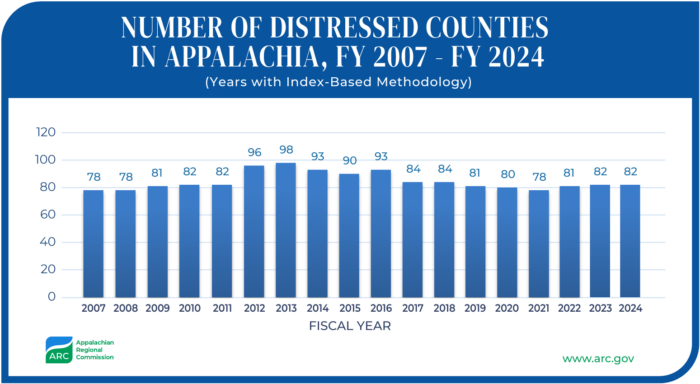ARC’s vision is to ensure that Appalachia—a region of great opportunity—will achieve socioeconomic parity with the nation. This means the Region’s economic indicators will become proportionate with the nation as a whole. While significant progress has been made, challenges such as economic transition in coal communities, the substance abuse crisis and COVID-19 remain.
Every year, ARC applies an index-based classification system to compare each county in the Region with national averages to understand how counties are performing. Analyzing three-year average unemployment rates, per capita market income, and poverty rates, each one of Appalachia’s 423 counties is then classified within one of five economic status designations—distressed, at-risk, transitional, competitive, or attainment. The designations are also used to determine the match requirements for ARC grants, as well as research topics and investment strategies targeting resources to the Region’s most distressed areas.
In fiscal year 2024, 82 counties are designated as distressed, 101 as at-risk, 225 as transitional, 11 as competitive, and 4 have reached attainment. This analysis draws on retrospective data, illustrates trends over time, and informs ARC’s grantmaking process. It is starting to reflect the economic impact of the COVID crisis as data covering that timeframe are now becoming available.
Interactive Map of County Economic Status and Distressed Areas, FY 2024
Distressed Counties in Appalachia
ARC has been computing an index-based county economic classification annually since fiscal year 2007. While the number of distressed counties can fluctuate from year to year, the current number is the fourth-lowest count since pre-recession in 2007.

Distressed Areas Within Counties
In some cases, specific areas within counties are considered economically distressed even if the county isn’t. ARC assigns the “distressed area” designation to census tracts in at-risk and transitional counties that have a median family income no greater than 67 percent of the U.S. average and a poverty rate 150 percent of the U.S. average or greater.